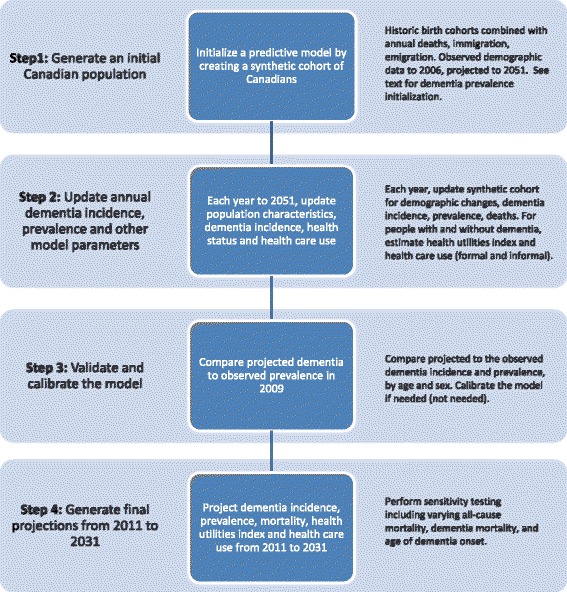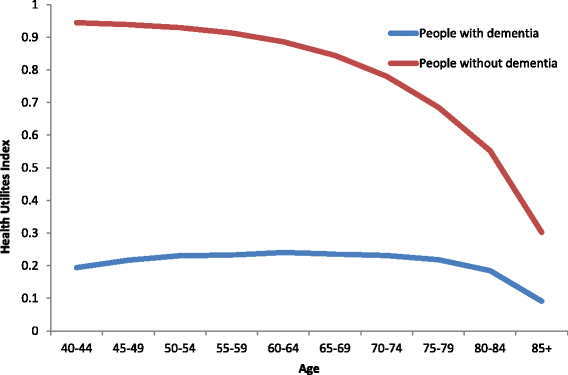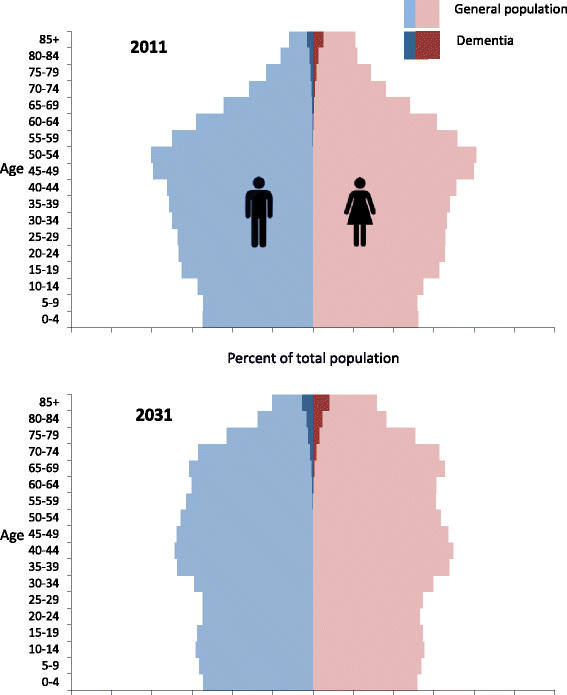Alzheimer's and other dementias in Canada, 2011 to 2031: a microsimulation Population Health Modeling (POHEM) study of projected prevalence, health burden, health services, and caregiving use
- PMID: 27822143
- PMCID: PMC5095994
- DOI: 10.1186/s12963-016-0107-z
Alzheimer's and other dementias in Canada, 2011 to 2031: a microsimulation Population Health Modeling (POHEM) study of projected prevalence, health burden, health services, and caregiving use
Abstract
Background: Worldwide, there is concern that increases in the prevalence of dementia will result in large demands for caregivers and supportive services that will be challenging to address. Previous dementia projections have either been simple extrapolations of prevalence or macrosimulations based on dementia incidence.
Methods: A population-based microsimulation model of Alzheimer's and related dementias (POHEM:Neurological) was created using Canadian demographic data, estimates of dementia incidence, health status (health-related quality of life and mortality risk), health care costs and informal caregiving use. Dementia prevalence and 12 other measures were projected to 2031.
Results: Between 2011 and 2031, there was a projected two-fold increase in the number of people living with dementia in Canada (1.6-fold increase in prevalence rate). By 2031, the projected informal (unpaid) caregiving for dementia in Canada was two billion hours per year, or 100 h per year per Canadian of working age.
Conclusions: The projected increase in dementia prevalence was largely related to the expected increase in older Canadians, with projections sensitive to changes in the age of dementia onset.
Keywords: Alzheimer disease; Computer simulation; Dementia; Health planning; Health status; Home care services; Outcome assessment (Health Care); Population dynamics; Quality of life; Time factors.
Figures
References
-
- Prince M, Guerchet M, Prina M. The Global Impact of Dementia 2013-2050. Alzheimer’s Disease International; 2013
-
- World Health Organization. Dementia: a public health priority. World Health Organization; 2012.
MeSH terms
LinkOut - more resources
Full Text Sources
Other Literature Sources
Medical




